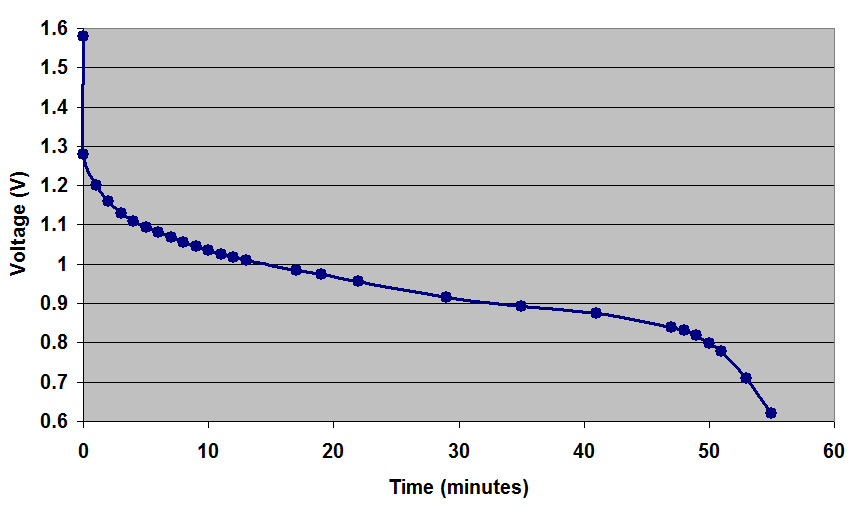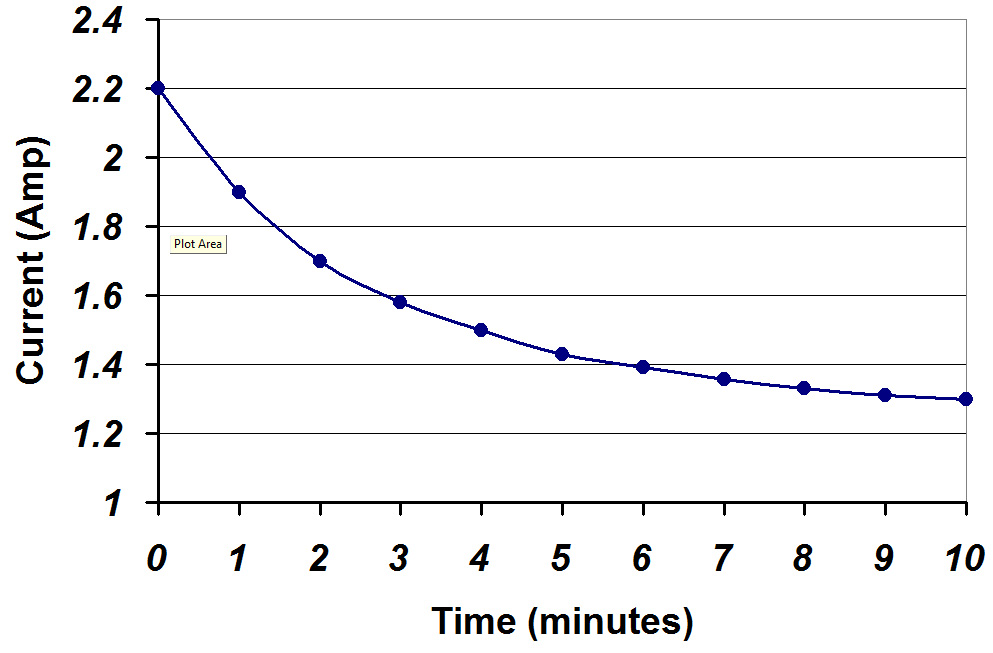When the car battery is dead, can you use AA batteries to crank the engine?
So there is a way, that is if you can put the AAs together and wait for 10 minutes. Could be useful if you are in the middle of a desert with a dead battery and a bunch of AAs! I would probably take a taxi if my job was on the line.
AA batteries can provide a lot of energy. The issue is that they can’t output that charge in a burst of high current. Every battery has some internal resistance, and that increases as the battery depletes.
While the internal resistance of a car battery can be less than 10 mOhm, the resistance of a AA battery is around 250 mOhm. This means if you draw 2 A from the battery, its voltage drops by 0.5V out of its total 1.5V. So ideally if you short the AA battery you can get a maximum of 6A.
A car’s crank motor typically needs over 50A of current and to start it may take an in-rush current of over 150A. 150A from a charged car battery would mean around only 1.5V drop out of its 12.5V no-load voltage. Like I mentioned, you would need maybe over 1000 AA batteries, 10 in series to get 15V no load, and 100 of those in parallel so that each string can provide 1.5A of the in-rush current. That should work, and probably you won’t need 1000 batteries either for smaller cars. That another thing to try I guess.
Now, every battery has a capacity, typically shown as Ah (Amp-Hour). The Ah number means you can draw that much current from the battery for an hour before the battery completely depletes. Of course if you draw more current, the battery dies faster. If you draw IL (Load Current) amount of current from the battery, ideally the following formula shows the amount of time you can run with your battery:
Time to Discharge = Ah / IL
In actual usage, if you draw less than Ah you can get more charge out of your battery, and if you draw more than Ah you will get less charge. Also the environmental conditions like temperature also effect the capacity. Ah value drops by battery age and all these are also dependent on the battery chemistry.
An alkaline AA battery has roughly around 1Ah of capacity. I tried this by connecting a 1 Ohm resistor across a new dollar-store AA battery and got the following voltage versus time curve. As I’m using 1 Ohm load, the curve can also be current versus time (V = R x I). The curve starts at no load voltage of around 1.58V and drops right away below 1.3V for around 1.3A. At the end were the battery voltage start dropping at a faster rate is where the battery is done.
Now assuming a AA battery can do 1A for 60 minutes, using the formula above, ideally it can do 360A for 10 seconds if it didn’t have the internal resistance. It means that the needed charge is there. So if I can pour that charge into a car battery than can deliver huge current with little voltage drop, I’m good to go.
To charge the car battery, I need to create a voltage above its level. I used 12 AA brand new batteries that gave me 19.4V at no load, or 1.62V per battery. I also put a one ohm resistor in series to measure the current as well as limit the current flowing through batteries.
As soon as I was drawing 2A into the car battery, with car battery around 12V and 2V drop on the 1 ohm resistor, I had 14V on my AAs, or 1.167V per battery. This indicates an internal resistance of around 225 mOhm for the new battery.
Now as the AAs discharged, their current dropped as shown in the curve below. I charged the car battery for 10 minutes, and I roughly had an average of around 1.5A going into the battery. This means that I could draw an average of 90A from the car battery for 10 seconds which is more than enough for most engines for a single crank.
To understand how I roughly calculate the amount of current I can draw, below is the formula I use to estimate the times or currents:
Current_1 x Time_1 = Current_2 x Time_2
As soon as the engine starts going, it quickly charges the car battery in a matter of a few seconds so you can crank with it again. So make sure that one crank counts.
Something you should note is that because you are charging the car battery with relatively small current, you should make sure all car devices and lamps are off. Otherwise they will draw the AA current away from the car battery and waste it.
You can also use a 12V or 14V drill battery. They can deliver much higher current and will charge the car battery much faster, like in a minute.
And again, don’t connect the batteries backwards. A car battery, even when it can’t crank the engine, can still deliver some significant amount of current and can smoke your AAs. There is no shock hazard though as the voltage is pretty low.


